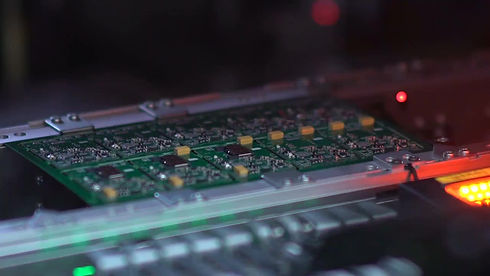PATENTS
What is a patent and how can I obtain one?
A patent grants the right to exclude others from making, using, offering for sale, or selling an invention in the United States. It also grants the right to exclude importing the invention into the United States.

MECHANICAL ARTS
In most cases, the U.S. Patent and Trademark Office requires inventors of mechanical devices to file mechanical illustrations specifying the precise placement of gears, levers, pulleys, and other functional aspects of the device. Each of the moving parts must be clearly shown and labeled in a way that comports with the standards developed by the USPTO. NAJAFI LAW, P.A. is highly familiar with the technical aspects of filing patent applications for mechanical devices. Our Jacksonville, Florida law office looks forward to assisting you with your case and helping you create adequate mechanical drawings illustrating the novel features of your invention. Learn more about the process on obtaining a patent.
ELECTRONIC ARTS
Examples of electronic arts may include inventions that have circuit boards, wireless communication systems, network systems, and website architecture that usually build on existing archetypes. Problems arise when laymen reviewing your patent application fail to see the improvements that distinguish your invention from existing models. Our team can help you create high-level schematic diagrams, flowcharts, electronic block diagrams, etc. that illustrate the interrelationship between the major electronic components of your invention.

BUSINESS METHOD/SOFTWARE
Computer-related technology patent
A business model patent applies primarily to computer-related technological innovations as opposed to actual business processes. E-commerce sites such as Amazon.com and Priceline.com have been successful in patenting ideas such as one-click purchasing and reverse auctioning, respectively. In other cases, the federal appellate courts have concluded that the validity of a patent depends less on whether the method enabled efficiencies already in process than on whether the method to be patented met the listed requirements of the patent statute — namely, that the method or process was tied to a particular apparatus or that the innovation transformed an article into a different thing, also known as the machine-or-transformation test. (See In re Bilski).
Patenting your software for the purposes of selling or licensing it can be challenging. When examining computer-implemented inventions, a patent examiner will determine whether the specification discloses the computer and the algorithm (e.g., the necessary steps and/or flowcharts) that perform the claimed function in sufficient detail such that one of ordinary skill in the art can reasonably conclude that the inventor invented the claimed subject matter. An algorithm is defined by the USPTO as a finite sequence of steps for solving a logical or mathematical problem or performing a task. The patent application should express the algorithm in any understandable terms, including as a mathematical formula, in prose, in a flowchart or in any other manner.
